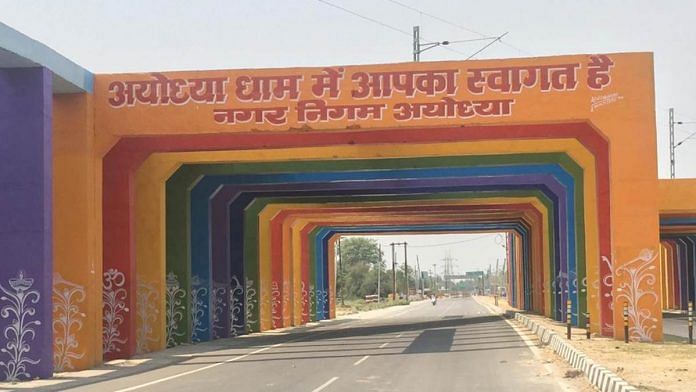Ayodhya: Ayodhya, the temple town of Uttar Pradesh, located some 135 km from state capital Lucknow that is currently getting battered by a deluge of Covid cases and deaths, has so far managed to stop the pandemic situation from spiralling out of control.
And, it’s not because of some divine intervention, but some prompt and even “not so popular” decisions taken by the district administration. There were no Ram Navami festivities this year, all temples were shut down and devotees and tourists were not allowed to enter the town.
The measures have helped Ayodhya prevent a surge as witnessed not only in Uttarakhand during the Kumbh Mela last month but also in the state’s densely populated Lucknow and Varanasi districts.
Seers from different parts of the country throng Ayodhya in large numbers to celebrate Ram Navami. This year, because of the Kumbh in Haridwar in neighbouring Uttarakhand, it was expected that a large number of saints would come to Ayodhya too, as part of the tradition.
Ayodhya, with a population of 24 lakh, reported 175 cases and one death on 2 May. A day before, on 1 May, the figure was 177 cases and zero deaths. Overall, the district has 2,258 active cases as on Sunday and a total of 151 deaths.
Ayodhya District Magistrate Anuj Kumar Jha told ThePrint that the administration continues to be on high alert. “We are still not out of the woods. As of now, we have managed to keep the Covid numbers from surging but challenges remain. If the number of cases continue to increase, we will be in a sticky position.”
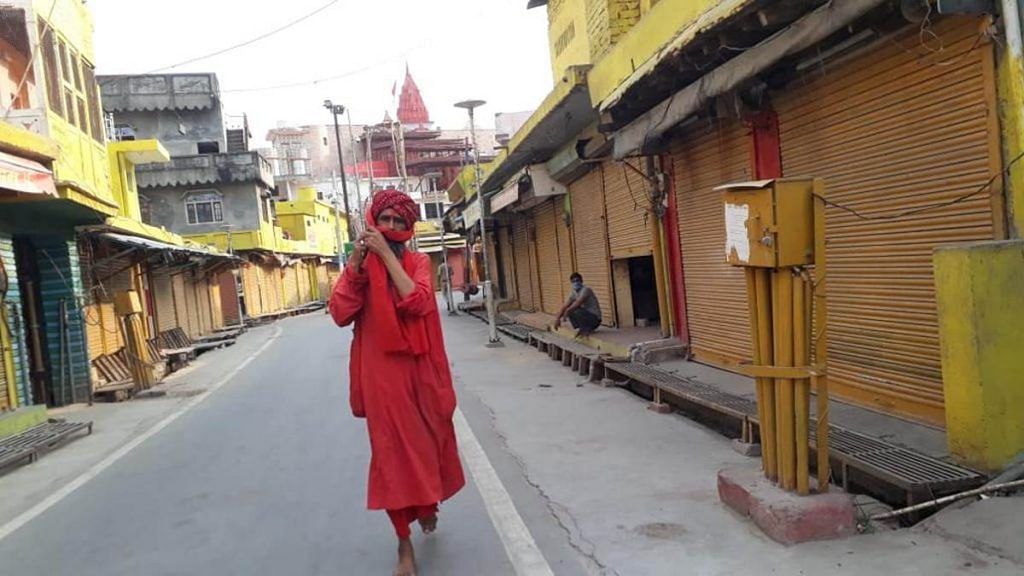
Also read: ‘Virus attacking on all sides’: Hospitals in rural UP districts are buckling under Covid flood
Temples shut, pilgrims and tourists stopped from entering
As Covid numbers started surging exponentially in the state by mid-April, the Ayodhya district administration decided to shut all temples and bar entry of pilgrims and tourists to the temple town.
“We decided to close all temples ahead of Ram Navami, which fell on April 21. Besides, we also stopped entry of pilgrims and tourists into Ayodhya. This was one of the biggest initiatives that helped us manage the situation from the initial days itself,” Jha told ThePrint.
Before the decision to shut the temple was taken, nearly 15,000 devotees on an average visited the temple town every day. “On weekends, especially during Ram Navami, the number used to go up to 1 lakh. That’s when we decided that it’s important to close the temples and bar entry of visitors,” Jha said.
The administration also decided to ban all kinds of religious gatherings.
Asked if he faced resistance from religious leaders in the city, Jha said: “We faced some initial resistance but then we reached out and convinced the sants and mahatmas (saints and holy people) that the move is for their own good. They gave in.”
The district administration had taken a similar action last year also when the pandemic first hit India. “Last year we faced a lot of opposition when we decided the shut the temple during Ram Navami. But the city benefitted from the move. We decided to implement it this time also,” Jha said.
The DM added that this time around they did not face much problem enforcing the Covid guidelines.
“When the people here including the saints saw what was happening around them in other cities and towns, they themselves became very cautious and mostly kept indoors,” he said.
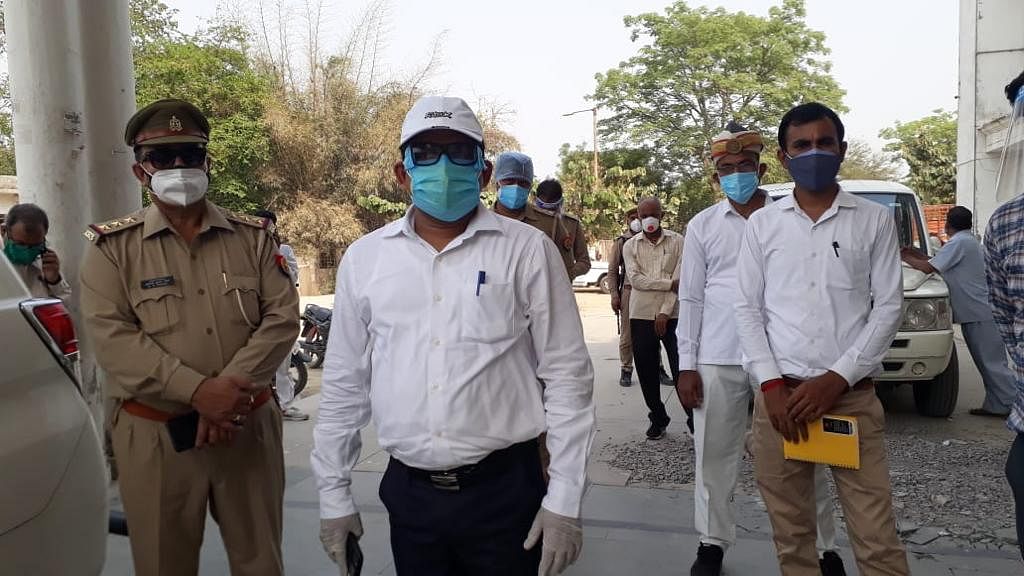
Oxygen cylinders kept for patients in home isolation
It was not just shutting the temples down.
Jha said the district administration has also increased testing. “We are conducting 2,500 to 3,000 tests every day, of which 40-50 per cent are RT-PCR,” he said.
The test positivity rate in Ayodhya hovers around 10%.
“If a person tests positive and has mild symptoms, we give him a Covid-19 kit at the testing centre itself. The kit has basic medicines for seven days. This includes paracetamol, zinc, Vitamin C, Vitamin D, doxycycline along with a prescription on when to take what medicine,” the DM said.
He added: “With this, we managed (to nip) about 90 per cent of the cases at the root only.”
Besides, the district administration is also rationing oxygen supply. Unlike other districts of Uttar Pradesh, the Ayodhya administration has kept some 150 cylinders for home isolation patients who need oxygen.
The oxygen demand in Ayodhya is presently to the tune of 5 metric tonnes. “With proper rationing, we are managing the oxygen requirement,” Jha said.
Only serious patients are being referred to hospital. This has ensured that the government hospitals are yet to face an acute shortage of beds or oxygen supply.
On Saturday, when ThePrint visited the 200-bed King Dasratha Medical College, the district’s largest and only Covid hospital, 117 beds were occupied, with 110 patients on oxygen.
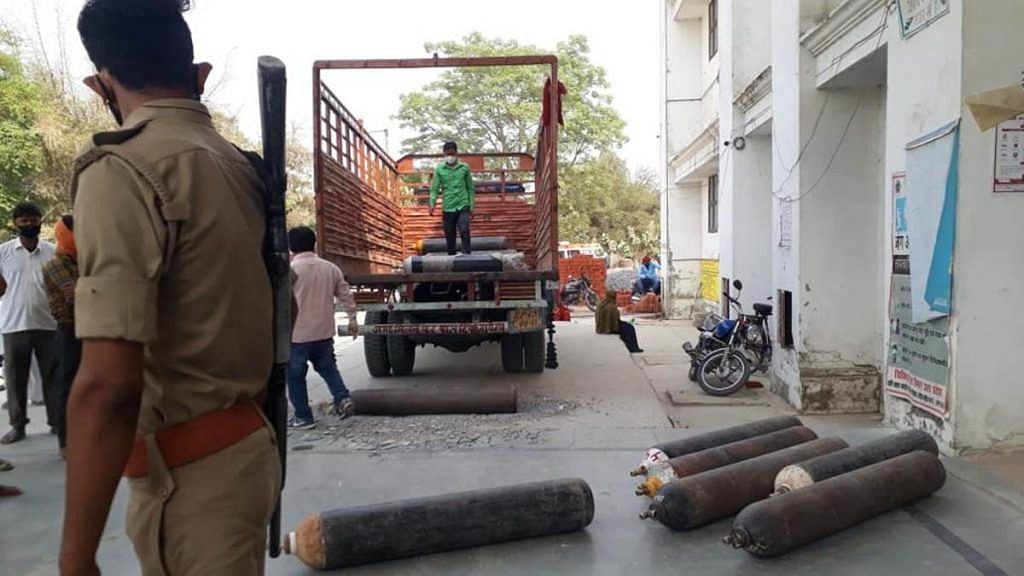
The hospital is among the rare few in the state where a dashboard has been put up outside the out-patient department (OPD), where details like total number of Covid patents and how many are on oxygen support has been displayed.
Two nursing staff at the medical college told ThePrint that the pressure on the hospital has eased a bit now. “Till last week, we too were facing shortage of beds and oxygen,” said one of them, who did not wish to be named.
Ayodhya Municipal Commissioner Vishal Singh told ThePrint that the administration is working round the clock to prevent a surge in Covid cases.
“If the number of cases goes up, it will become difficult for us. For a small place like Ayodhya, it will be difficult to handle if cases go beyond 200 per day,” he said.
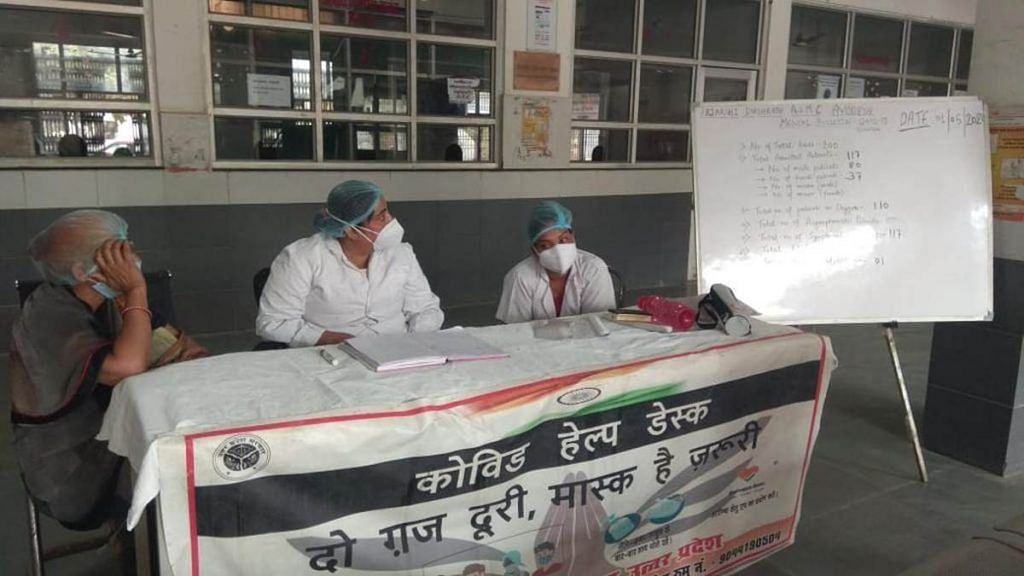
Singh said besides the government medical college, the administration is converting the district women hospital into a Covid facility to handle a surge, in case that happens. A temporary Covid facility will also be set up in a stadium.
Dr Sunita Singh, a gynaecologist who runs her own private clinic in the city, said the problem arises as many people despite having symptoms don’t get tested or disclose that they have Covid-19.
“That is a challenge for the administration,” she said, adding that as of now things are under control in the city.
“The death numbers are minimum though cases are growing. One of the reasons that the government hospital is not overburdened is because many people who have the wherewithal are going to Lucknow to get treated. Health infrastructure in Ayodhya is inadequate.”
The district administration had also activated the nigrani samitis (monitoring committees) set up at the ward level to keep an eye on Kumbh returnees, screen and send those found symptomatic to quarantine centres.
However, on the ground, ThePrint did not come across any monitoring or screening mechanism for Kumbh returnees in place.
Also read: ‘Have no choice but to borrow’: Kanpur leather industry owners reel under second Covid wave
‘Get vaccine shots, take God’s name and keep Covid at bay’
After a couple of deaths among the seers, the community on its own started adhering to Covid protocols and staying indoors, residents of the temple town said.
“You will still see one or two sadhus roaming around without masks but by and large the majority of them are disciplined,” said Parmeshwar Das Vedant of Sri Mani Ram Das Ki Chhawani.
The chhawani, which houses Ayodhya’s largest temple, is the high seat of saints where they live with their disciples.
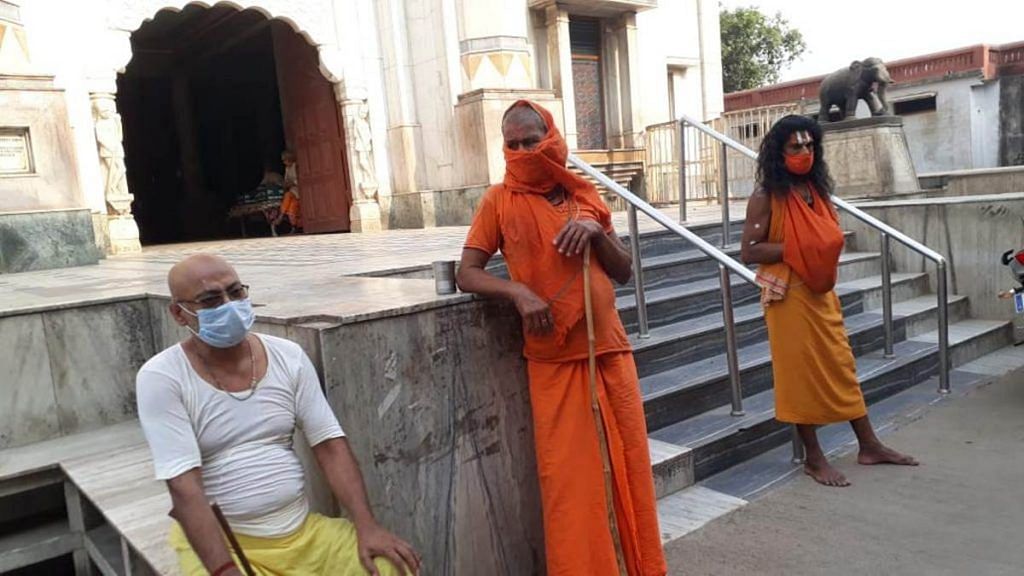
There are some 1,000 disciples who are currently living here. “But they keep indoors and follow all Covid guidelines like wearing masks and maintaining social distance. Awadh ki janata bahut sachetan hain corona ko lekar (Awadh residents are very aware about Covid),” Vedant added.
Mahant Nritya Gopal Das, head of the Shri Ram Janmabhoomi Teerth Kshetra, which is overseeing the construction of the Ram temple in Ayodhya, is the spiritual head of the Mani Ram Chhawani.
Das, who had tested positive for Covid days after attending the foundation laying ceremony of the temple in August last year, has recovered since and lives in the chhawani. Those staying there said he keeps indoors most of the time to avoid any complication since he is very old.
The seers also do not have any vaccine hesitancy.
“Most of them living here, who are eligible, have taken the Covid vaccine. People here are very spiritual. They follow Covid guidelines, take God’s name… that’s how we keep corona away,” said Maya Ram Das, who serves in Ayodhya’s Dashrath Mahal.
(Edited by Sanghamitra Mazumdar)
Also read: Incomes of Indians were shrinking even before Covid, pandemic will only make it worse


